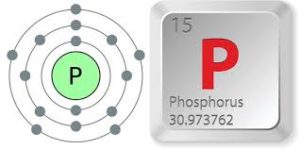Why is phosphorus known as devil’s element?« Back to Questions List
|
Phosphorous is an important element that has a vital role in the life of organisms. The number thirteen is often considered an inauspicious number and the fear of the number 13 is known by the name, Triskaidekaphobia. Phosphorous was the 13th element to be discovered. Hence the element is sometimes referred to as the devil’s element. Apart from that, it has a peculiar glowing characteristic, which also adds to its notoriety. It is associated with light in graveyards, alchemists, nerve agents etc. The element has many crystal structures, white phosphorous and red phosphorous structures being most famous. White phosphorous was the first extracted form of the element. When exposed to oxygen, it emitted a faint glow hence the name was taken from Greek mythology. White phosphorous has a special feature: it glows in the dark. Phosphorous is found in living cells, nervous tissues and bones. Phosphorous deposited on the ground after decomposition of bodies causes light in the night. The glow is caused by oxidation of the white phosphorous. The element spontaneously ignites when comes in contact with air and produces a peculiar glow. This process is called chemiluminescence. People walking by graveyards have often witnessed the scary light, leading to superstitions. This oxidation characteristic is used in fireworks and explosives. White phosphorus gradually becomes red phosphorus. This transformation is aided by light and heat. White phosphorus almost always has contents of some red phosphorus making its appearance yellow. Red phosphorus is polymeric in structure. Violet phosphorus is another form of phosphorus. This form can be produced by day-long annealing of red phosphorus above 550 °C. Phosphorous also has a black form. Phosphorus is the most toxic of the allotropes. It is least stable and highly volatile and reactive. Hence phosphorous is never found on Earth as free element. It is often found in minerals. The element has the atomic number 15 and symbol P. A study report published in 2013 in the National Academy of Sciences says that phosphorous was brought to Earth by meteorites. It also concluded that the element was abundant on earth around 3.5 billion years back.
Phosphorescence means glow after illumination and the term is derived from the special property of phosphorus. But the word now is used for a different physical process that produces a glow. The elements, nitrogen, arsenic, antimony, bismuth and phosphorus are classified as a pnictogen family. Pnictogen, known as nitrogen family is a group of chemical elements in group 15 of the periodic table. Phosphorous is an important element that has a vital role in the life of organisms. The number thirteen is often considered an inauspicious number and the fear of the number 13 is known by the name, Triskaidekaphobia. Phosphorous was the 13th element to be discovered. Hence the element is sometimes referred to as the devil’s element. Apart from that, it has a peculiar glowing characteristic, which also adds to its notoriety. It is associated with light in graveyards, alchemists, nerve agents etc. he element has many crystal structures, white phosphorous and red phosphorous structures being most famous. White phosphorous was the first extracted form of the element. When exposed to oxygen, it emitted a faint glow hence the name was taken from Greek mythology. White phosphorous has a special feature: it glows in the dark. Phosphorous is found in living cells, nervous tissues and bones. Phosphorous deposited on the ground after decomposition of bodies causes light in the night. The glow is caused by oxidation of the white phosphorous. The element spontaneously ignites when comes in contact with air and produces a peculiar glow. This process is called chemiluminescence. People walking by graveyards have often witnessed the scary light, leading to superstitions. This oxidation characteristic is used in fireworks and explosives. White phosphorus gradually becomes red phosphorus. This transformation is aided by light and heat. White phosphorus almost always has contents of some red phosphorus making its appearance yellow. Red phosphorus is polymeric in structure. Violet phosphorus is another form of phosphorus. This form can be produced by day-long annealing of red phosphorus above 550 °C. Phosphorous also has a black form. Phosphorus is the most toxic of the allotropes. It is least stable and highly volatile and reactive. Hence phosphorous is never found on Earth as free element. It is often found in minerals. The element has the atomic number 15 and symbol P. A study report published in 2013 in the National Academy of Sciences says that phosphorous was brought to Earth by meteorites. It also concluded that the element was abundant on earth around 3.5 billion years back.
Phosphorescence means glow after illumination and the term is derived from the special property of phosphorus. But the word now is used for a different physical process that produces a glow. The elements, nitrogen, arsenic, antimony, bismuth and phosphorus are classified as a pnictogen family. Pnictogen, known as nitrogen family is a group of chemical elements in group 15 of the periodic table. What are the characteristics of Iodine?Fireworks: Secret Behind the Colors and Other Aspects |

